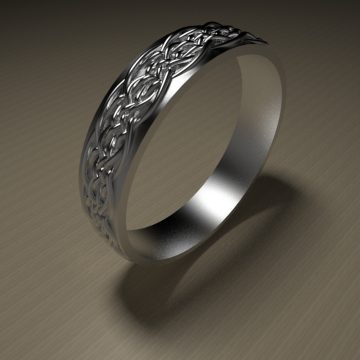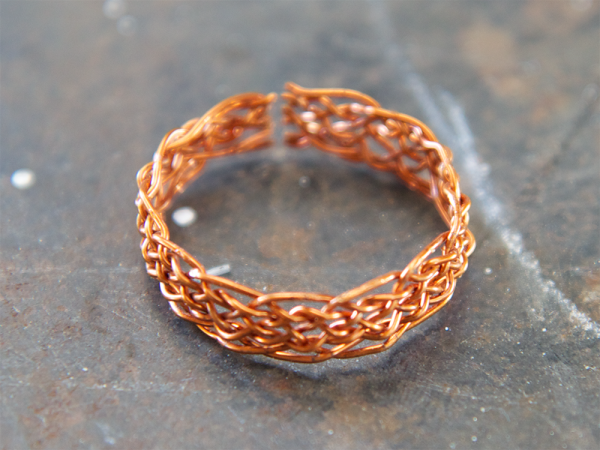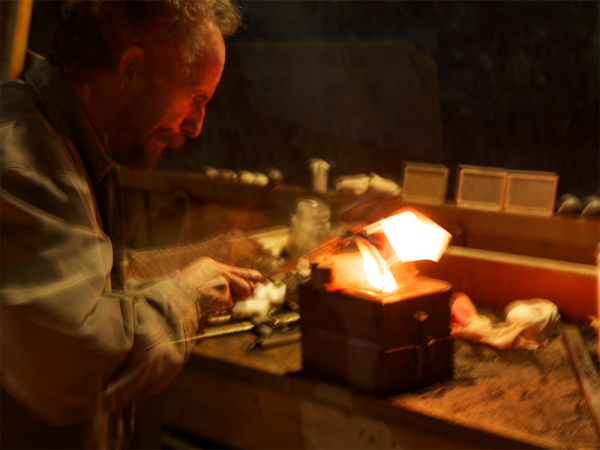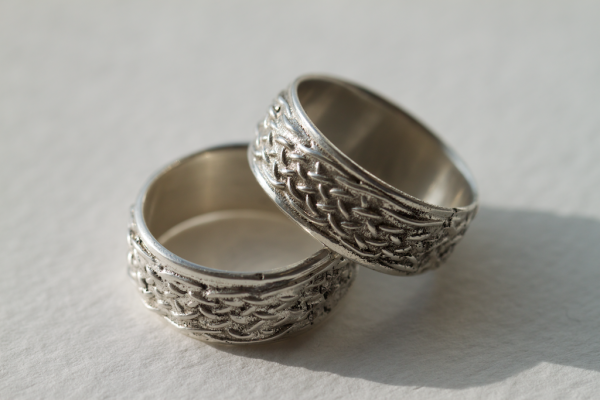Handcrafting the digital: Wedding rings
This is cross posted on Brian Lockyear’s Gnarly Architecture blog. Those interested in the intersection of the technical and artistic worlds (probably a majority given the topics of this blog) should take a look!
To design my wedding rings I started with digital and algorithmic systems. Not for any particular reason, but I am good at them and enjoy the sorts of control they both give and take away from me. The computer makes such methods easier and faster helping develop helping take the ideas out of my head. Here is my design:
The problem then is how to get the ideas and forms out of the computer. There are several options. For anything two dimensional we now all have incredibly accurate printers at home. Even in 3d pretty great options are starting to emerge. Yet these technologies did not feel right for wedding rings, perhaps in part because they felt too easy. Just to make the task harder I also wanted something that retained some sense of the design process. Not just a way to make this particular ring but something that could, in principal just as easily make any of the other rings that I did not choose. In other words I wanted a process, something that could take in a weave pattern and give out a ring (or in this case two). This was the point when it is good to have friends and this is the process worked out with (to be honest mostly by) Eugene Sargent.
Firstly the design shifted a little bit to allow for a casting process and also give a stronger ring:
The next trick was to actually make the woven pattern. We did this using copper wire:
The problem was we kept on getting lost as we tried to follow the individual strands of wire through the weave. The solution was to consider the crossings not the strands. The strands are labelled 1 to 8, and when they cross they also swap numbers. So if 1 and 2 cross the strand that was 1 becomes 2 and vice versa. This might sound complicated, but it means that you can forget the individual strands and only need to consider their current position.
We were reinventing the wheel in this as it is an ancient technique for creating braids. For example it is used in the classic hair braiding technique where the hair is divided into three strands and first the right and then the left strand are brought into the middle. With the strands labelled 1, 2 and 3 this would correspond to swapping 1 and 2 and then 2 and 3. The idea of considering crossings is also used in the mathematical study of braids, called appropriately braid theory, and can be used to produce images of braids simply by describing the crossings.
Using this method we could describe a wide variety of braid patterns and reliably weave them. This would produces a woven copper ring:
That can be wrapped round a blank:
We then used epoxy to fill in the overlaps. The finished blank was then used for sandcasting. Making the mold:
That could have molten silver pored into it:
Revealing a fairly rough version of the ring:
With polishing and filing the cast rings ended up like this:
The key is that this process could be used for any weaving pattern without significant change. In this sense it is parametric, with the parameter being either a pattern or, more usefully, the abstract listing of the crossings that describes the pattern. On the other hand the process that uses the parameter is simple handwork combined with the ancient technology of sand-casting. The computer, though a useful tool in the design phase, is not a necessary part of the process.










Pingback: Permutations, weaving and wedding rings « Maxwell's Demon